Letter from Cebu (12) ”How has Sinulog been succeeded over 400 years?”
2022/12/7
Letter from Cebu (No.12)
“How has Sinulog been succeeded over 400 years?”
“How has Sinulog been succeeded over 400 years?”
The Sinulog Festival is one of the largest festivals in the Philippines held in Cebu in every third Sunday of January. The total number of participants and spectators before the COVID-19 Pandemic reportedly reached about 4 million. A dance performed in this festival is called Sinulog. The word Sinulog comes from the Cebuano adverb sulog, meaning “continuously changing like water current”. The dance consists of two steps forward and one step backward, done to the sound of drums.
The Sinulog Festival started in 1980. Mr. David S. Odilao Jr., then Regional Director of the Department of Youth and Sports Development organized the Festival. Seven schools and universities joined the first event. Each team was given an era to represent the history of Cebu from the primitive time to the present. Mr. Odilao turned over the Sinulog project to the Cebu City Historical Committee, under the direction of Cebu City Mayor Florentino S. Solon, and the Sinulog Foundation was established to make the festival big.
The origin of Sinulog is considered to be the dance performed by indigenous Cebuanos in the pre-Colonial period, carrying an animal-shaped wooden image. The wooden image was said to have been replaced with the image of Santo Niño after the Spanish Colonization.
My question was how Sinulog has been succeeded from generation to generation for over 400 years. I met an executive of the Sinulog Foundation and asked this question. But his answer was stereotyped and not satisfactory, stating the “miracle” of Saint Niño (the image of Santo Niño, which Ferdinand Magellan gave to Juana, a wife of Rajah Humabon in 1521, was recovered from a burnt house in 1565.), and the Sinulog Festival started from 1980.
So, I visited Dr. Ceasar F. Nimor, Associate Professor, Matias H. Aznar Memorial College of Medicine, and asked several questions. As a result I obtained the following findings.
First of all, it was Sinug, not Sinulog that has been succeeded for the last more than 400 years. Sinug has two types of dances. The “Votive Sinug” is a dance having been performed more than 400 years, by candle vendors in front of Basilica Minore del Santo Niño. This is the indigenous and original form of dance.
The second type of dance is called the “Combative Sinug”, which evolved from “Votive Sinug” in the mid-19th century. The “Combative Sinug” has been performed by the Turang Dance Troupe. This “Combative Sinug” leads to the Contemporary Sinulog. When the Sinulog Festival was planned, Nang Titang Diola, who led the Turang Dance Troupe, was invited to Cebu Doctor’s College to teach her dance.
So, what are the differences between the “Combative Sinug” and the current Sinulog? The first difference, according to Dr. Nimor, is that Sinug dancers do not carry the image of Santo Niño. Carrying the image is considered as sacrilegious. Sinug dancers perform in front of the image of Santo Niño placed on the altar.
The second difference is the story of the dance. In the “Combative Sinug”, there are three characters, Cebuano indigenous people, Islamic people called moro-moro, and the Spaniards. There is a battle between Cebuanos and the Moros, and then, the battle is intervened by Spaniards, in front of the image of Santo Niño.
The third difference is tempo and rhythm. Sinulog has faster tempo and more rhythmical than Sinug. Dancers and spectators must be fascinated with rhythmical Sinulog.
Sinulog is definitely fun for dancing and even watching. Sinulog based dances are evolving as the Sinulog festival is becoming bigger and bigger. However, Sinug, which has been succeeded more than 400 years, should not be forgotten. Sinug is performed in the garden of Casa Gorordo Museum on Monday, one week after the Sinulog Festival. I admire the efforts for preserving the traditional dance. At the same time, let’s pay attention to the “Votive Sinug” by candle vendors near Basilica Minore del Santo Niño.
The Sinulog Festival started in 1980. Mr. David S. Odilao Jr., then Regional Director of the Department of Youth and Sports Development organized the Festival. Seven schools and universities joined the first event. Each team was given an era to represent the history of Cebu from the primitive time to the present. Mr. Odilao turned over the Sinulog project to the Cebu City Historical Committee, under the direction of Cebu City Mayor Florentino S. Solon, and the Sinulog Foundation was established to make the festival big.
The origin of Sinulog is considered to be the dance performed by indigenous Cebuanos in the pre-Colonial period, carrying an animal-shaped wooden image. The wooden image was said to have been replaced with the image of Santo Niño after the Spanish Colonization.
My question was how Sinulog has been succeeded from generation to generation for over 400 years. I met an executive of the Sinulog Foundation and asked this question. But his answer was stereotyped and not satisfactory, stating the “miracle” of Saint Niño (the image of Santo Niño, which Ferdinand Magellan gave to Juana, a wife of Rajah Humabon in 1521, was recovered from a burnt house in 1565.), and the Sinulog Festival started from 1980.
So, I visited Dr. Ceasar F. Nimor, Associate Professor, Matias H. Aznar Memorial College of Medicine, and asked several questions. As a result I obtained the following findings.
First of all, it was Sinug, not Sinulog that has been succeeded for the last more than 400 years. Sinug has two types of dances. The “Votive Sinug” is a dance having been performed more than 400 years, by candle vendors in front of Basilica Minore del Santo Niño. This is the indigenous and original form of dance.
The second type of dance is called the “Combative Sinug”, which evolved from “Votive Sinug” in the mid-19th century. The “Combative Sinug” has been performed by the Turang Dance Troupe. This “Combative Sinug” leads to the Contemporary Sinulog. When the Sinulog Festival was planned, Nang Titang Diola, who led the Turang Dance Troupe, was invited to Cebu Doctor’s College to teach her dance.
So, what are the differences between the “Combative Sinug” and the current Sinulog? The first difference, according to Dr. Nimor, is that Sinug dancers do not carry the image of Santo Niño. Carrying the image is considered as sacrilegious. Sinug dancers perform in front of the image of Santo Niño placed on the altar.
The second difference is the story of the dance. In the “Combative Sinug”, there are three characters, Cebuano indigenous people, Islamic people called moro-moro, and the Spaniards. There is a battle between Cebuanos and the Moros, and then, the battle is intervened by Spaniards, in front of the image of Santo Niño.
The third difference is tempo and rhythm. Sinulog has faster tempo and more rhythmical than Sinug. Dancers and spectators must be fascinated with rhythmical Sinulog.
Sinulog is definitely fun for dancing and even watching. Sinulog based dances are evolving as the Sinulog festival is becoming bigger and bigger. However, Sinug, which has been succeeded more than 400 years, should not be forgotten. Sinug is performed in the garden of Casa Gorordo Museum on Monday, one week after the Sinulog Festival. I admire the efforts for preserving the traditional dance. At the same time, let’s pay attention to the “Votive Sinug” by candle vendors near Basilica Minore del Santo Niño.
(Sinulog Festival)
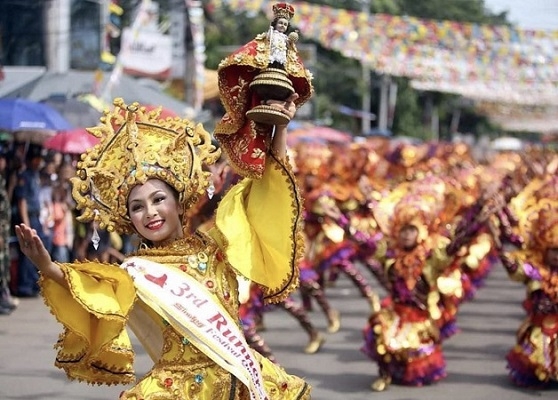
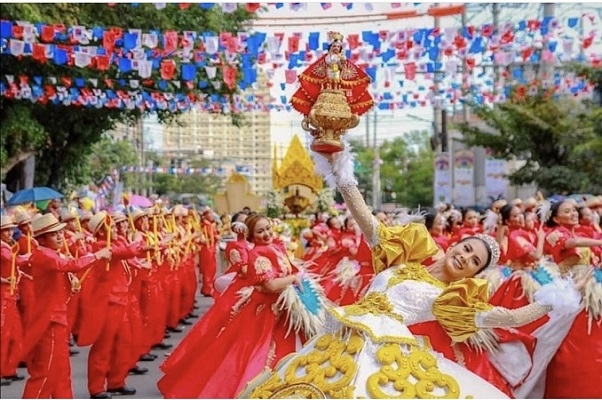
(LEFT)Photo Credit: Sinulog Festival (Instagram). Retrieved from https://instagram.com/sinulogfestival?igshid=Nzg3NjI1NGI=
(RIGHT)Photo Credit: Sinulog Festival (Instagram). Sinanduloy Cultural Troupe in Sinulog 2020 Grand Champion, Sinulog Based Category. Retrieved from https://instagram.com/sinulogfestival?igshid=Nzg3NjI1NGI=
(RIGHT)Photo Credit: Sinulog Festival (Instagram). Sinanduloy Cultural Troupe in Sinulog 2020 Grand Champion, Sinulog Based Category. Retrieved from https://instagram.com/sinulogfestival?igshid=Nzg3NjI1NGI=
(Development of Sinug and Sinulog)
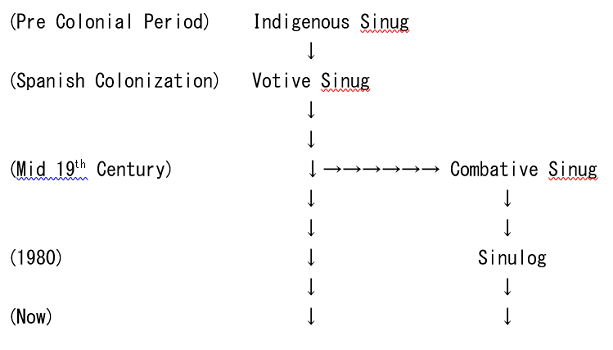
(Dr. Ceasar F. Nimor)
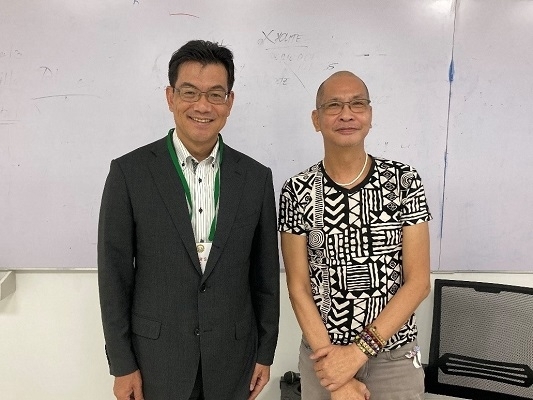
(A candle vendor and Votive Sinug)
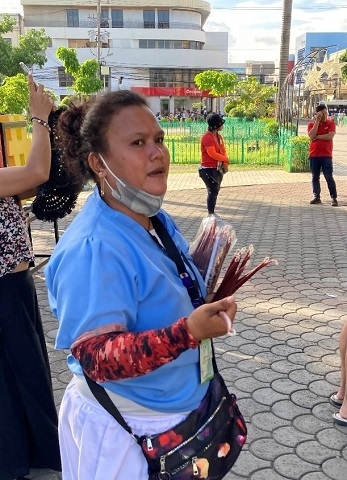
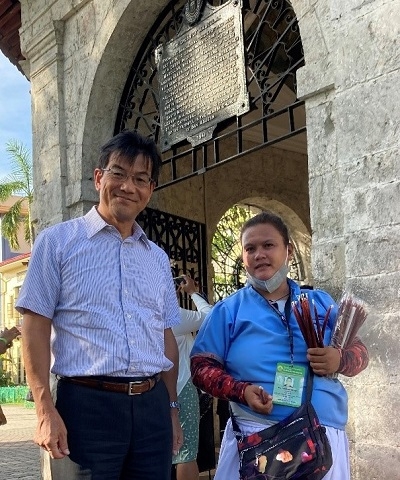
Hideki YAMAJI
Consul General of Japan in Cebu
(end)
(end)
